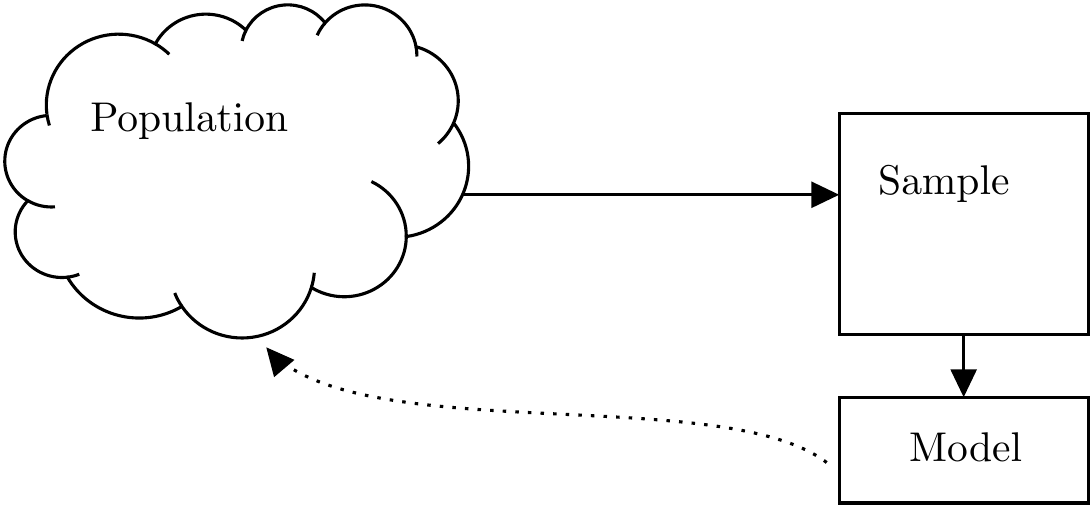The goal of inference
The goal of inference

The scientific process.
P < 0.05
The problem with
inference
- All swans are white (P < 0.05)
JJ Harrison (https://www.jjharrison.com.au/) - Own work CC BY-SA 4.0
What does the p-value mean?

What does the p-value mean?
All groups regained weight after randomization by a mean of 5.5 kg in the self-directed, 5.2 kg in the interactive technology–based, and 4.0 kg in the personal-contact group… Those in the personal-contact group regained a mean of 1.2 kg less than those in the interactive technology–based group (95% CI, 2.1-0.3 kg; P=.008).
What does the p-value mean? Svetkey at al…
- …have absolutely disproved the null hypothesis (that there is no difference between the population means).
- … have found the probability of the null hypothesis being true.
- … have absolutely proved their experimental hypothesis (that there is a difference between the population means).
What does the p-value mean? Svetkey at al…
- … can deduce the probability of the experimental hypothesis being true.
- … know the probability that you are making the wrong decision, if you decided to reject the null hypothesis.
- … have a reliable experimental finding in the sense that if, hypothetically, the experiment were repeated a great number of times, you would obtain a significant result on 95 % of occasions.
Questions adopted from (Dienes 2008).

Statistical inference

Statistical inference
Drawing inference from a sample
Participants are recruited to an intervention and randomized to either receive a RED or BLUE pills.
Systolic blood pressure after the intervention
Do RED and BLUE pills affect blood pressure differently?
The results

A permutation experiment

10 000 Permutation

10 000 Permutation and our result

How unlikely is our result if the pills had no effect?
- The average observed difference was 2.47.
- 167 reshuffled averages where equal to or greater than our observed result.
- This represent a small fraction of the reshuffled differences, in fact…
- \(p = \frac{167}{10000} = 0.0167\)
To account for both extremes
- When allocating the pills we did not really know what to expect, we did not account for the direction of the effect in our last test.
- We should compare our result to extreme results in both directions.
- 167 averages were equal to or greater than our observed result, and 169 averages were equal to or smaller than an effect corresponding to the observed in the other direction.
- \(p = \frac{167 + 169}{10000} = 0.0336\)
What is enough evidence for inference?
We have produced a P-value!
So far, given our experiment, how do you define the P-value?
Is the P-value low enough to conclude anything about our pills?